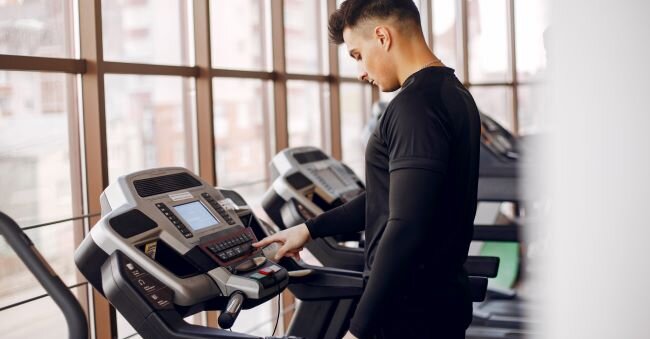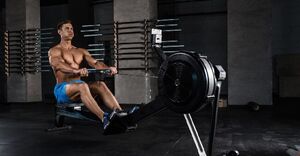
Beginner’s Guide to Gym Equipment: Powerful Types, Benefits, and Tips for 2024
Are you new to the world of gym equipment and feeling overwhelmed by the variety of options available? Whether you’re looking to improve your cardiovascular health, build strength, or simply stay fit, understanding the different types of gym equipment and how to use them is essential for achieving your fitness goals.
In this beginner’s guide to gym equipment, we will explore the benefits of using various types of equipment, how to choose the right ones for your needs, and the best practices for using and maintaining them. By the end of this article, you’ll have a better understanding of the importance of gym equipment in your fitness journey.
What Are the Benefits of Using Gym Equipment?
The beginner’s guide to gym equipment provides a comprehensive analysis of the fitness benefits derived from using various workout tools and exercise machines at a fitness center or gym.
Engaging in strength training with gym equipment not only helps to build muscle mass and increase bone density but also enhances overall strength and stability.
Cardiovascular exercise, using equipment like treadmills and stationary bikes, is essential for improving heart health, increasing stamina, and burning calories.
Resistance exercises using gym equipment such as resistance bands or free weights can target specific muscle groups, promoting muscular endurance and tone.
Types of Gym Equipment
A comprehensive analysis of gym equipment reveals various types of fitness tools and exercise machines available at gyms and fitness centers, including stationary bikes, treadmills, dumbbells, barbells, weight machines, workout benches, and more.
Cardio Machines
Cardio machines are essential exercise equipment for cardiovascular workouts, including stationary bikes, treadmills, elliptical trainers, and exercise bikes. These machines are designed to elevate heart rate, increase endurance, and improve overall cardiovascular health.
Incorporating cardio exercises into your fitness routine can lower the risk of heart disease, boost metabolism, and enhance mood. “Exercise is medicine for the body and mind.”
Stationary bikes provide low-impact workouts, while treadmills offer effective indoor running or walking options. Elliptical trainers offer full-body workouts, and exercise bikes target leg muscles. Using these machines regularly can aid in weight management and contribute to a healthier lifestyle.
Strength Training Machines
Strength training machines encompass a variety of gym equipment designed for resistance training, including weight machines, workout benches, leg press machines, lat pulldown machines, and cable machines, fundamental for muscle development and toning.
Weight machines, such as lat pulldown and leg press machines, play a critical role in providing targeted resistance exercises to different muscle groups. This enables individuals to build strength and muscular endurance.
These machines allow users to adjust the resistance level, making them suitable for both beginners and advanced trainers. Lat pulldown machines focus on strengthening the upper back and arms, while leg press machines effectively target the lower body, facilitating comprehensive muscle development.
Free Weights
Free weights, such as dumbbells, barbells, and kettlebells, are versatile gym equipment, commonly utilized for various workout and exercise routines, promoting functional strength and muscle balance.
Free weights offer a wide range of movements, engaging multiple muscle groups at once and improving coordination and stability. They also allow for varied resistance levels, making them suitable for individuals of all fitness levels and providing the ability to tailor a workout program.
Incorporating free weights into functional training exercises mimics real-life movements and enhances overall physical performance. This also leads to better muscle recruitment and balance, resulting in increased functional strength and agility.
Resistance Bands
Resistance bands are effective exercise equipment used for resistance training and workouts in the gym, offering versatile options for enhancing strength and flexibility in various exercises.
They come in various levels of resistance, allowing for customization of workout intensity based on fitness goals. Resistance bands are also portable and versatile, making them suitable for use at home, in the gym, or while traveling.
These bands offer a cost-effective and efficient way to achieve a full-body workout, whether it’s for building muscle strength, improving mobility, or aiding in rehabilitation. They are adaptable to different fitness levels, making them a valuable addition to any exercise routine for beginners to advanced athletes.
How to Choose the Right Gym Equipment for Your Needs?
The beginner’s guide to selecting the right gym equipment involves considering your fitness goals, budget, and available space while evaluating the essential gym facilities and accessories that align with your workout plan.
When deciding on gym equipment, it’s crucial to match your fitness goals with appropriate machines and tools.
For those focusing on cardio, a treadmill or stationary bike could be ideal choices, while individuals aiming to build strength might prioritize a set of dumbbells or a weight bench.
Budget constraints can be managed by opting for multipurpose equipment or used items.
Compact and foldable designs are great for saving space in smaller workout areas.
Don’t forget to consider accessories such as yoga mats, resistance bands, and stability balls for a well-rounded fitness setup.
Consider Your Fitness Goals
When selecting gym equipment, it is essential to consider your fitness goals and workout plan, ensuring that the chosen tools and machines align with your specific exercise objectives and training regimen.
By aligning your equipment with your individual fitness goals, you can optimize your workouts and progress more effectively.
For instance, if your goal is to build strength, prioritizing weight machines and free weights would be beneficial. On the other hand, individuals focused on cardiovascular health can benefit from equipment such as treadmills, stationary bikes, or rowing machines.
Ultimately, the right equipment will complement your workout plan, leading to better results and a more enjoyable fitness journey.
Assess Your Budget
Assessing your budget is a crucial step in choosing gym equipment. It determines the range of fitness tools, facilities, and accessories within your financial capacity for effective workout routines.
When setting up a home gym, it’s important to consider affordable alternatives and prioritize equipment that aligns with your fitness goals. This could mean researching promotional offers, second-hand options, or leasing programs to optimize cost-efficiency.
Additionally, it’s crucial to evaluate potential long-term expenses such as maintenance, warranties, and space requirements. By balancing quality and affordability, you can create a well-equipped space without overspending. Remember to seek value for your investment, ensuring that the chosen gym essentials contribute to an effective and sustainable fitness regimen while also aligning with your financial plans.
Evaluate Your Space
Evaluating your available space is vital for determining the gym equipment and exercise tools that can be accommodated within your workout area while optimizing the functionality and accessibility of fitness facilities and accessories.
This process helps in ensuring that the layout of your fitness space maximizes the usage of every square foot and allows for a seamless flow when using various exercise machines and accessories.
By carefully analyzing the dimensions and layout of the area, you can strategically place equipment to avoid overcrowding and optimize the workout space for a comfortable and effective fitness experience. This approach also contributes to creating a safe environment by preventing congestion and allowing adequate space for movement during workouts.
How to Use Different Types of Gym Equipment?
The beginner’s guide to using various types of gym equipment involves understanding proper form and technique, as well as gaining insight into resistance and weight dynamics to ensure safe and effective workouts at the fitness center or gym.
When using gym equipment, safety should always be a top priority. This includes starting with a thorough warm-up to prepare the body for the upcoming exercises.
For weight machines, it’s important to adjust the settings to the appropriate level to ensure smooth and controlled movements. When using free weights, maintaining proper posture and alignment throughout the exercise is crucial.
It can also be helpful to understand common gym terminology, such as sets, reps, and rest periods, to structure a well-rounded workout routine. And remember, seeking guidance from a certified trainer can help maximize the benefits and minimize the risk of injury.
Proper Form and Technique
Using gym equipment with proper form and technique is essential for preventing injuries and maximizing the effectiveness of your workouts. This necessitates attention to safety, exercise instructions, and workout protocols.
When utilizing gym equipment, it is imperative to maintain proper posture and alignment to avoid straining muscles or causing undue stress on joints.
Taking the time to familiarize yourself with the correct usage of each machine and understanding its safety features can significantly reduce the risk of accidents.
Following recommended exercise instructions and adhering to workout protocols tailored to your fitness level can aid in achieving optimal results while minimizing the chance of injury.
Understanding Resistance and Weight
Understanding the dynamics of resistance and weight when using gym equipment is essential for customizing workouts, ensuring safety, and familiarizing with exercise terminologies and equipment specifications.
Understanding the various types of resistance, such as free weights, resistance bands, and machines, is crucial for effective workouts.
Proper knowledge of weight adjustment and form when using gym equipment can prevent injuries and maximize the effectiveness of your workout.
It also allows individuals to comprehend terms like reps, sets, and different training methods, leading to a safer and more efficient exercise routine.
Familiarity with these fundamental principles is essential for anyone looking to achieve their fitness goals in a gym setting.
Common Mistakes to Avoid When Using Gym Equipment
Avoiding common mistakes when using gym equipment is crucial for promoting safety, maintaining proper etiquette, and optimizing the effectiveness of your workout routines at the fitness center or gym.
Proper instruction on how to use equipment is crucial for injury prevention and maximizing your workout. Adjust machines to your body’s proportions, maintain good posture, and use a challenging weight without straining muscles.
Remember to wipe down equipment, follow gym rules and policies, and be mindful of others. By being considerate, you create a safe and positive gym environment for all.
How to Maintain and Clean Gym Equipment?
Proper maintenance and cleaning of gym equipment are essential for ensuring longevity, hygiene, and safety in the fitness center or gym. This requires adherence to specific guidelines and protocols for upkeep.
Regular cleaning of gym equipment is crucial for preventing the build-up of sweat, bacteria, and germs, which can result in foul odors and potential health hazards. It is important to wipe down surfaces with disinfectant wipes after each use and to regularly deep clean the equipment using appropriate cleaning solutions.
Inspecting the equipment for any signs of wear and tear and promptly addressing any issues can contribute to prolonging its lifespan and ensuring the safety of the users.




No Comments